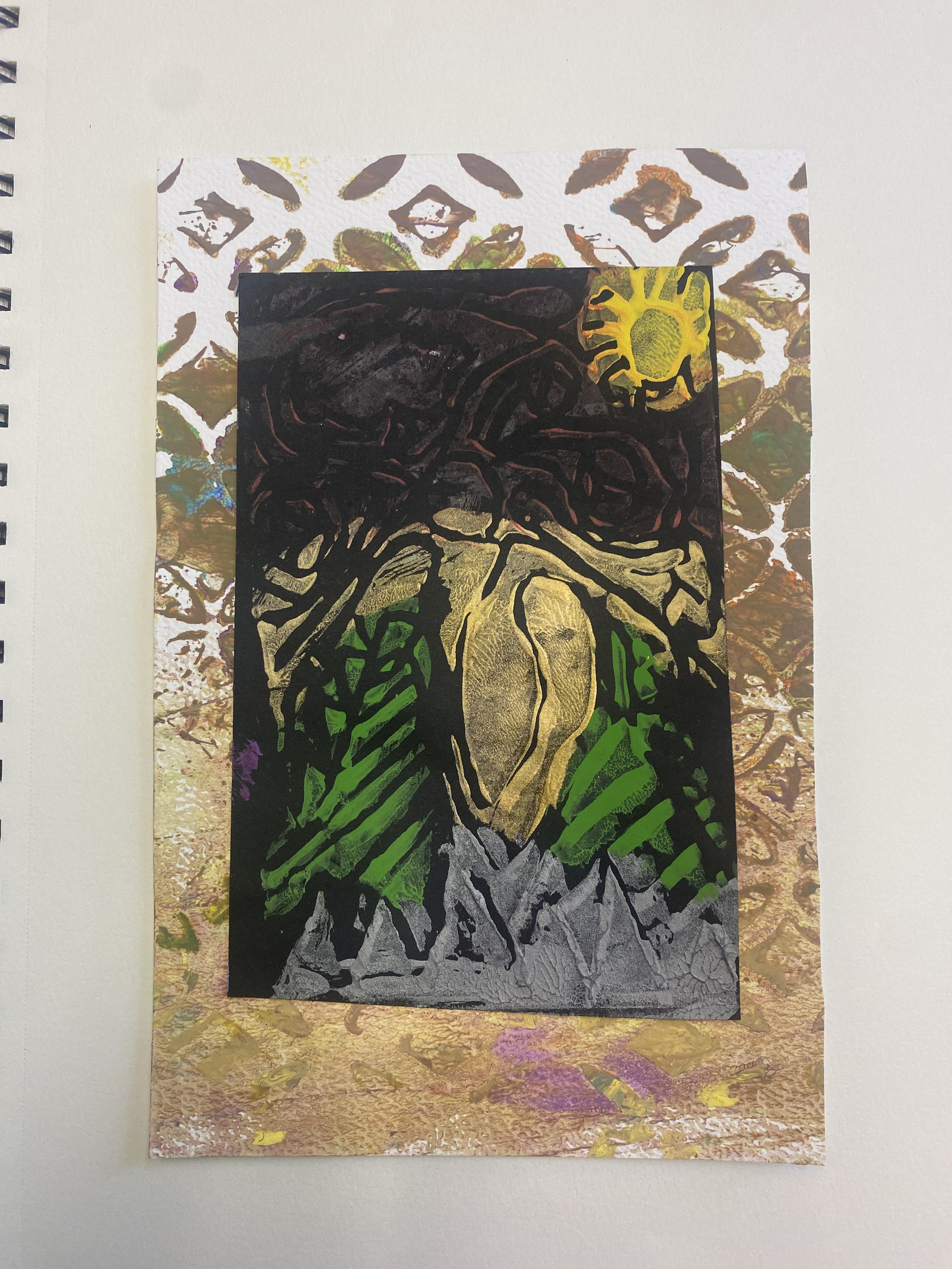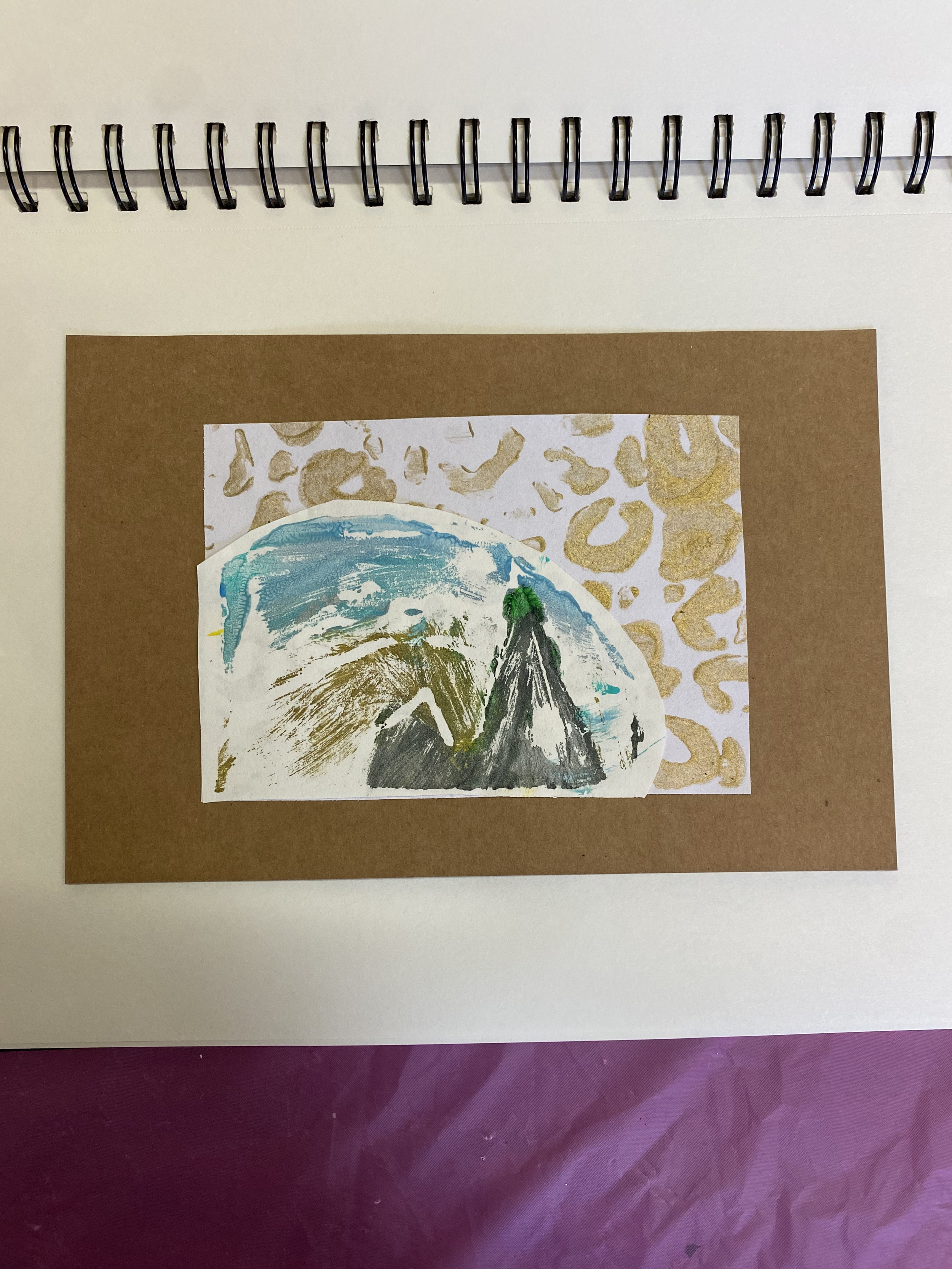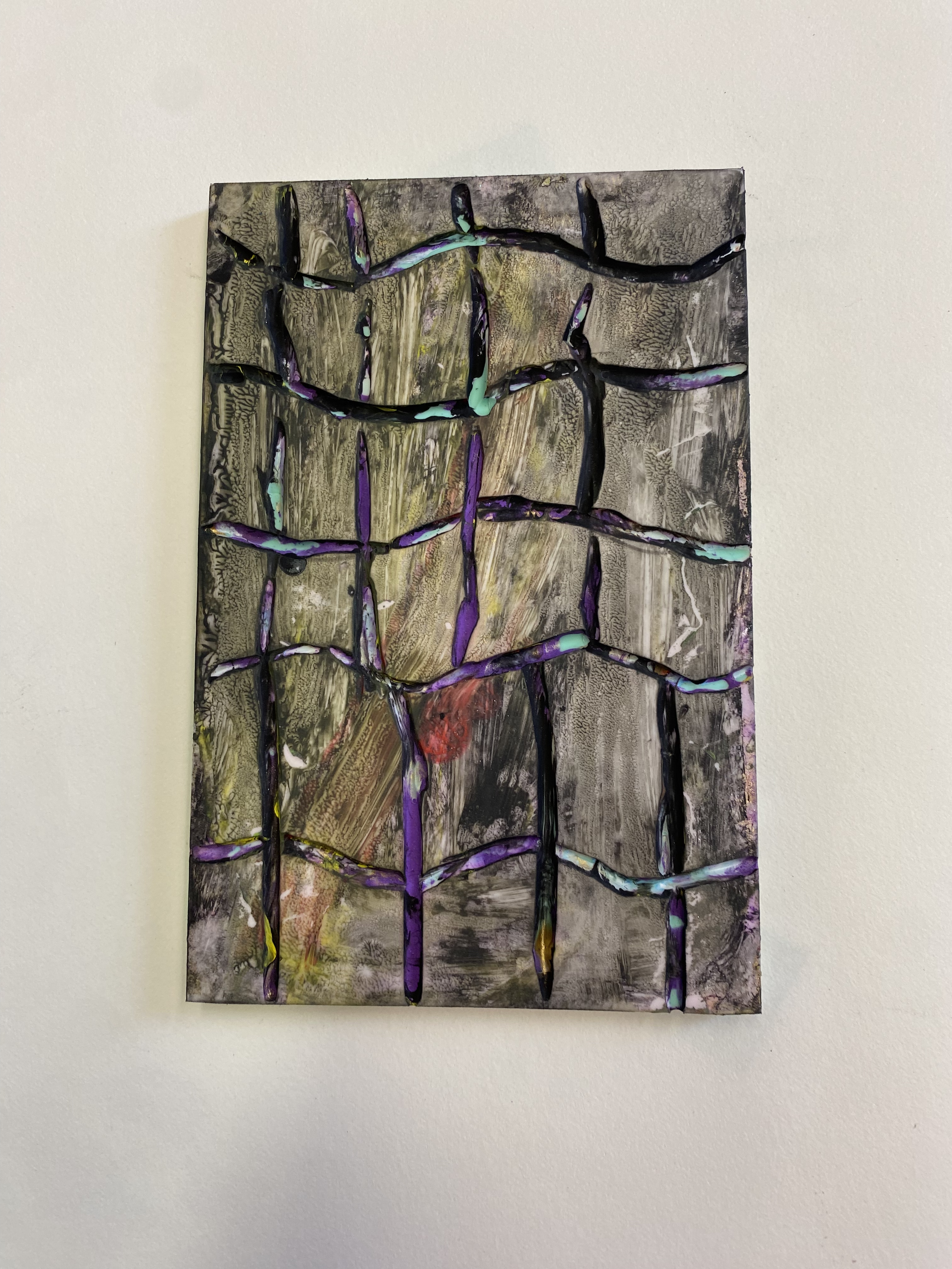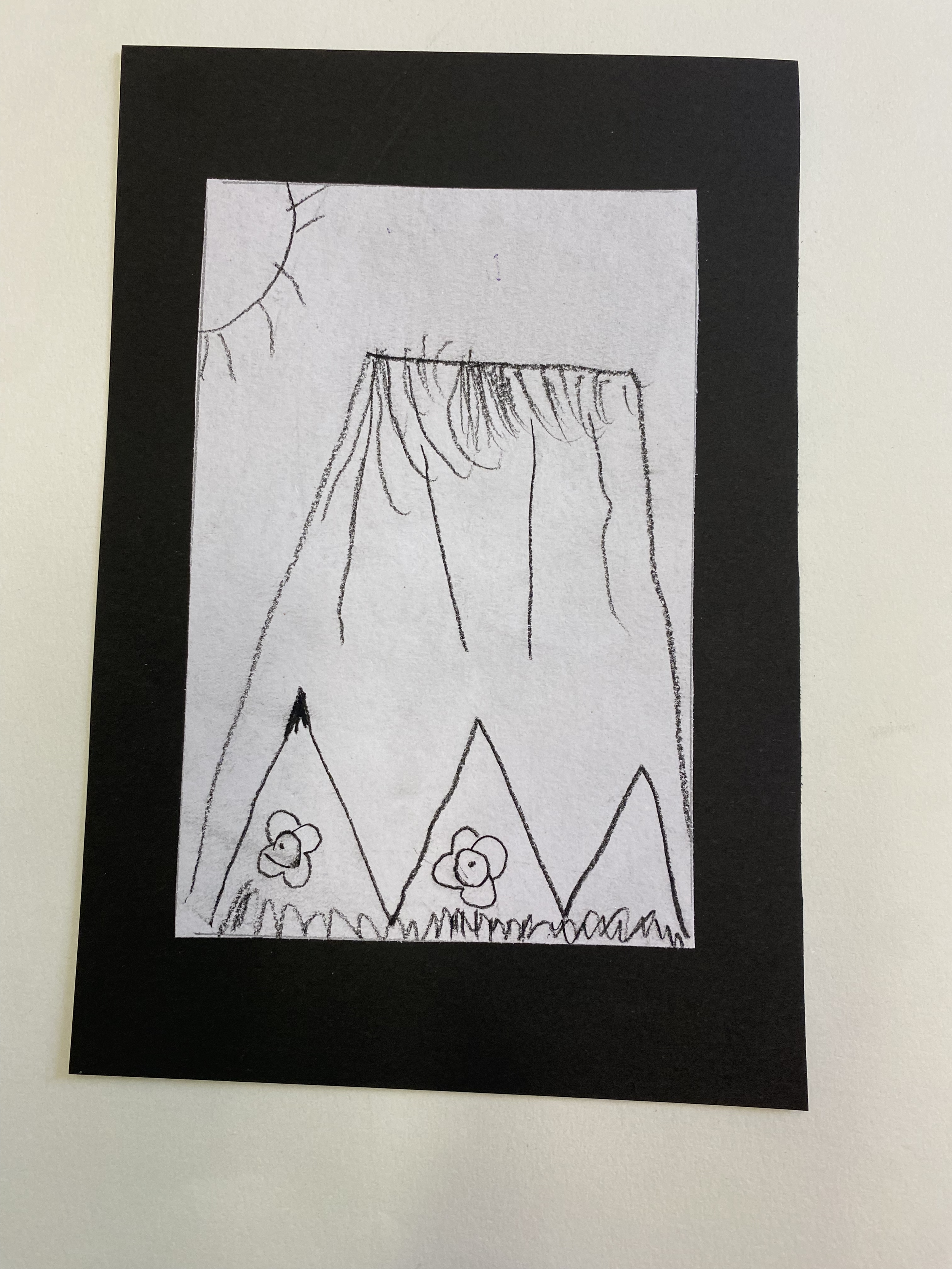Introduction to Lino Block Cutting and Printmaking
Grade Level: Grades 4-6
Subject Area: Visual Arts & Language Arts
Duration: Half-day
The students experienced an exciting art adventure of Lino block cutting and printing. The art lesson sparked creativity, fostered artistic expression, and provided a safe and supervised learning environment where respecting the use of art materials was paramount.
The students embarked on a journey of discovery, gained an understanding of the process of Lino block cutting and printed their own vibrant prints. Mixed media materials were used such as Lino blocks, carving tools, brayers, printing ink and printmaking paper.
Every element was carefully curated to nurture the budding artists’ creativity. From an intriguing introduction to the art form to hands-on demonstrations and a collaborative sharing session, every moment was filled with creativity and learning. The lesson aimed to introduce students to the basic concepts of Lino block cutting, the printmaking process, and the importance of safety and supervision in artistic endeavours. Aligned with Ontario Ministry of Education’s Art Curriculum this engaging lesson perfectly aligned with the curriculum guidelines for grades 1-5, providing an introduction to art processes, fostering creativity, and ensuring a secure environment for artistic investigation along with exploration in mixed media processes.
Learning Objectives:
Students will be introduced to the basics of Lino block cutting and printmaking, gaining an understanding of the process and creating their own prints. This lesson plan also incorporates a cross-curricular component with Language Arts.
Introduction to Lino Block Cutting: Students will be introduced to the concepts of Lino block cutting, including the safe use of carving tools and creation of more complex designs on Lino blocks.
Printmaking Process: Students will learn the process of applying ink to their carved Lino blocks and transferring their designs onto paper to create prints, exploring the use of lines, shapes and textures.
Hands-On Experience: Through hands-on activities, students will gain experience in creating their own Lino block prints, fostering creativity and artistic expression.
Cross-Curricular Component - Language Arts: Students will practice descriptive writing skills by writing descriptions or narratives about their Lino block prints, making connections between their artwork and the written component.
Safety and Supervision: The lesson will emphasize safety rules and procedures for using carving tools, with close supervision during the hands-on activity to ensure safe practices.
Visual Arts Curriculum Expectations Connections (Grades 4-6):
Creating and Presenting:
Demonstrate an understanding of the elements and principles of design in their own art making.
Use a variety of materials, tools and techniques to respond to design challenges.
Create two- and three-dimensional works of art that communicate ideas.
Reflecting, Responding and Analyzing:
Analyze artworks, including their own and the work of others, using elements and principles of design as a framework for thinking and talking about art.
Language Arts Curriculum Expectations Connections (Grade 4-6):
Writing: Produce effective pieces of writing for a range of purposes and audiences, using a variety of forms, with a focus on developing a clear main idea and using descriptive language.
By integrating these curriculum expectations into the lesson plan, students will engage in a comprehensive learning experience that aligns with the Ontario Ministry of Education’s expectations for Visual Arts and Language Arts in grades 4-6.
Materials:
Lino blocks
Carving tools
Printing ink
Printing paper
Pencils
Sketching paper
Reference materials on Lino block cutting and printmaking
Aprons
Rollers
Workshop Plan
Introduction/Discussion:
Begin the lesson by introducing students to the concept of Lino block cutting and printmaking. Ask students if they have any prior knowledge about this art form.
Show examples of Lino block prints that demonstrate more complexity and details, discussing how artists use this technique to create intricate designs.
Connect the concept of Lino block cutting and printmaking to the use of lines and shapes in art.
Demonstration:
Gather the students and demonstrate the basic steps of Lino block cutting, emphasizing the safe use of carving tools and the creation of more intricate designs on the Lino blocks.
Show them how to apply ink and transfer their designs onto paper to create prints.
Discuss how different textures and shading techniques can be achieved through the carving process.
Review safety processes.
Hands-On Activity:
Provide each student with a small piece of Lino block and ask them to sketch a more complex design using pencils on sketching paper. Encourage them to incorporate different lines, shapes and textures into their designs.
Once the designs are finalized, students will transfer their designs onto the Lino blocks and begin the carving process under supervision
After the carving is complete, students will apply ink to their blocks and make prints on paper.
Cross-Curricular Component - Language Arts:
Ask students to write a short artists description or narrative about their Lino block print. Encourage them to use descriptive language to convey the emotions and ideas behind their design.
Have students share their descriptions or narratives with a partner, discussing the connections between their artwork and the written component.
Discussion and Sharing:
Have students share their prints and written descriptions/narratives with the class, discussing the inspiration behind their designs and the techniques they used.
Encourage positive feedback and scission about the unique qualities of each print and the effectiveness of the written component in conveying meaning.
Conclusion:
Summarize the key points of the lesson, emphasizing the creativity and effort put into each student’s print and written component.
Encourage students to continue exploring Lino block cutting and printmaking in their own time and express their creativity through art and writing.
Assessment:
Student understanding and engagement during the demonstration and hand-son at making activity
Quality and creativity of the final prints produced by the students
Participation and adherence to safety rules during the carving process
Quality and effectiveness of the written descriptions/narratives in conveying meaning
Final Overview:
This lesson plan aligns with the Ontario Ministry of Education’s art curriculum for grades 4-6 by providing an introduction to more complex art processes, fostering creativity and artistic expression, and incorporating a cross-curricular component with Language Arts. However, it can be revised to apply to any grade level and curriculum expectations.
All art classes and workshops can be altered to meet any grade level or expectation.



































































